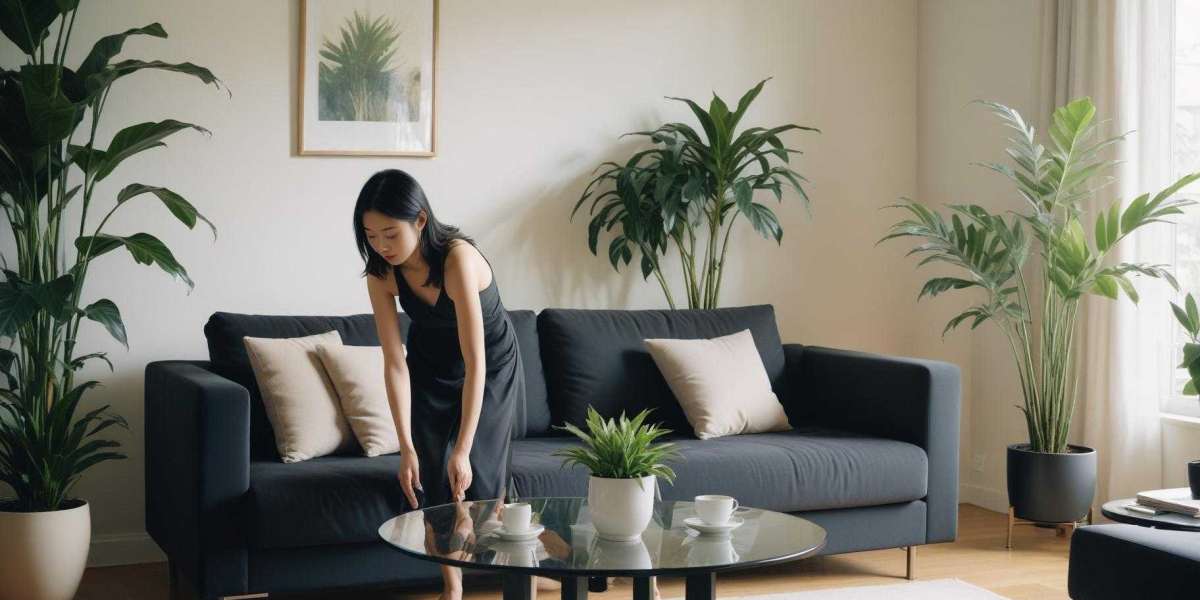Your living room is more than just a space to unwind; it’s the heart of your home. It's where family gathers, friends come over, and sometimes, where you tackle work or study tasks. Arranging living room furniture for multi-purpose use can transform this vital area into an inviting hub that meets all your needs. Whether you're entertaining guests or seeking a cozy spot for some solitude, the right layout makes all the difference. Let’s explore how to maximize functionality while maintaining style in your living room!
The Importance of Functional Living Spaces
Functional living spaces enhance comfort and usability. They allow you to seamlessly transition between relaxation, work, and entertainment without feeling cluttered or chaotic.
A well-organized room adapts to your lifestyle. It encourages productivity while also providing a cozy retreat after a long day. When every piece of furniture serves a purpose, the space becomes more enjoyable for everyone.
In today’s fast-paced world, flexible areas are essential. You might need an inviting spot for casual gatherings one moment and require a quiet corner for concentration the next.
Creating functional spaces promotes harmony in your home life. Every family member can find their niche while still being part of the overall atmosphere. When design meets practicality, it leads to happier moments spent together.
Analyzing Your Space and Needs
Before you begin arranging living room furniture, take a moment to analyze your space. Consider the dimensions of the room and its natural flow. Measure your walls, windows, and pathways to understand what you’re working with.
Next, think about how you use this space daily. Is it purely for relaxation or does it serve as an entertainment hub? Are there moments when work needs to happen here? Identifying these functions will help shape your layout.
Pay attention to existing features like fireplaces or built-in shelving. These elements can guide where larger pieces should go while maximizing convenience.
Don’t forget about lighting. Natural light can change how a room feels and influences where furniture should be placed for comfort and functionality.
Choosing the Right Furniture Pieces
Choosing the right furniture for a multi-purpose living room is key. Think about versatility first. Look for pieces that can serve multiple functions, like an ottoman that doubles as storage.
Size matters too. Measure your space carefully to avoid overcrowding. A large sectional may feel inviting but could limit movement and flexibility.
Consider style and comfort next. Your furniture should reflect your personality while providing ease of use during different activities, from lounging to working.
Don’t forget about materials. Choose fabrics that are durable and easy to clean, especially if you have kids or pets around.
Keep future needs in mind. Modular furniture can adapt as life changes—perfect for growing families or shifting lifestyles. The right selection lays the foundation for a harmonious living area where all activities flow seamlessly together.
Arranging Furniture for Conversation and Entertainment
Creating a space that encourages conversation and entertainment is essential in any living room. Start by positioning seating to face one another, forming an inviting circle or semi-circle. This arrangement fosters intimacy and engagement.
Consider the flow of movement around the furniture. Leave enough space for guests to navigate comfortably without feeling cramped. A good rule of thumb is to maintain 18 inches between coffee tables and couches.
Incorporate versatile pieces like ottomans or poufs that can be moved easily for additional seating when needed. Layering rugs can define areas, making it clear where conversations happen versus more relaxed lounging spots.
Don’t forget about lighting! Soft ambient lights create a warm atmosphere while ensuring your living room remains cozy during gatherings. Adding side tables within reach will keep snacks and drinks close, enhancing both comfort and enjoyment during those lively chats with friends.
Creating a Work or Study Area in the Living Room
Designing a work or study area in your living room can enhance productivity without sacrificing style. Start by choosing a designated corner or nook that feels separate yet connected to the rest of the space.
Opt for a sleek desk that complements your existing décor. A small, multifunctional table can serve as both a workspace and an occasional dining spot.
Lighting is crucial; consider adding a stylish desk lamp or using natural light from nearby windows. This not only brightens your workspace but also keeps energy levels high.
Incorporate organizational tools like shelves or baskets to keep supplies handy yet tidy. Personal touches, such as artwork or plants, can inspire creativity while making the area feel inviting.
Ensure comfortable seating with an ergonomic chair that fits seamlessly among your living room furniture. Balancing aesthetics with functionality creates an efficient working environment at home.
Maximizing Storage and Organization
Maximizing storage and organization is essential in a multi-purpose living room. Start by assessing your current items. Identify what you use regularly and what can be stored away.
Choose furniture with built-in storage options, like ottomans or coffee tables that open up. Shelving units can work wonders too; they not only display decor but also keep books and games tidy.
Consider vertical space as an asset. Wall-mounted shelves free up floor area while offering additional storage solutions. Baskets are great for keeping smaller items organized without sacrificing style.
Utilize under-furniture spaces wisely. Don’t forget about the area beneath sofa set or side tables for discreet storage bins.
Labeling boxes and containers helps everyone know where things belong, which promotes consistent organization habits within the household.
Tips for Maintaining an Organized Multi-Purpose Living Room
To keep a multi-purpose living room tidy, establish zones for different activities. Use rugs or furniture placement to define areas like relaxation, work, and play.
Regularly assess what you need in each zone. Keep only essential items within reach while storing away the rest. This creates visual clarity and reduces clutter.
Incorporate stylish storage solutions. Baskets or decorative boxes can hide everyday items without sacrificing aesthetics.
Encourage everyone in the household to maintain their spaces daily. A quick five-minute cleanup makes a huge difference over time.
Adopt a “one-in, one-out” rule for new items entering your space. This helps control accumulation and keeps your living room manageable.
Dedicate a monthly decluttering session to reassess your setup. Refreshing your organization routine keeps the atmosphere light and welcoming for all activities.
Conclusion
Arranging living room furniture for multi-purpose use can transform your space into a hub of activity. By prioritizing functionality, you create an environment that adapts to various needs—whether it’s entertaining guests, relaxing with family, or focusing on work.
Consider the flow of movement and how different areas within the room interact. The right arrangement encourages conversation while also allowing for quiet moments. When selecting furniture, think about versatility and comfort; pieces should complement each other without overcrowding your space.
Incorporating storage solutions will help maintain order amidst daily activities. A well-organized room not only enhances aesthetics but also promotes productivity and relaxation.
With thoughtful planning and creativity, your living room can become more than just a place to unwind. It can evolve into a multifunctional area that caters to all aspects of life. Embrace this opportunity to design a living space that truly works for you!








